- Popular Post
-
Posts
10,794 -
Joined
-
Last visited
Content Type
Events
Forums
Downloads
Quizzes
Gallery
Blogs
Posts posted by Social Media
-
-

LockBit, the notorious Russian ransomware group, has defiantly resurfaced just days after law enforcement agencies dismantled its infrastructure in a coordinated international effort. Despite authorities seizing servers and websites and retrieving over 1,000 decryption keys to aid victims, LockBit has brazenly returned to the scene, taunting law enforcement and threatening to leak sensitive documents, including those related to former President Donald Trump.
The group's resurgence was announced through a new leak site, showcasing more than a dozen alleged victims, including the FBI itself, hospitals, and Georgia's Fulton County, which remains reeling from a recent cyber intrusion that disrupted crucial IT systems. LockBit has claimed responsibility for the Fulton County breach and issued a chilling ultimatum, setting a countdown clock for March 2 and demanding ransom payment to prevent the release of confidential data, including information on jurors involved in criminal trials.
Of particular concern is LockBit's assertion that it possesses documents pertaining to Donald Trump's court cases, which it threatens to unveil unless its ransom demands are met. The potential disclosure of such sensitive information could have significant ramifications, potentially impacting legal proceedings and public perception.
LockBit's return comes amidst a backdrop of failed promises from law enforcement regarding the disclosure of the group's public spokesperson's identity, known as LockBitSupp. In a brazen display of defiance, LockBitSupp mocked the FBI and other agencies, dismissing the impact of the recent crackdown and boasting about the group's resilience. The ransomware operator even attributed the server seizure to personal negligence, claiming a failure to update PHP software in a timely manner.
While law enforcement agencies have emphasized their success in disrupting LockBit's operations and assisting victims with decryption, LockBit remains undeterred, highlighting the ongoing cat-and-mouse game between cybercriminals and authorities. Despite the setbacks, LockBit's audacious return underscores the persistent threat posed by ransomware groups and the challenges faced by law enforcement in combating such criminal enterprises.
As the battle against ransomware continues, law enforcement agencies reaffirm their commitment to thwarting cyber threats and protecting individuals and organizations from malicious actors. While LockBit may attempt to rebuild its operations, authorities remain vigilant in their efforts to disrupt cybercriminal activities and safeguard cybersecurity on a global scale.
28.02.24

-

Sean "Diddy" Combs Faces New Lawsuit Alleging Sexual Assault by Former Music Producer
Sean "Diddy" Combs, the renowned hip-hop mogul and founder of Bad Boy Entertainment, finds himself embroiled in another legal battle as Rodney "Lil Rod" Jones, a former music producer, filed a federal lawsuit accusing Combs of sexual assault and harassment. This marks the sixth lawsuit against Combs in recent months, with Jones becoming the first male plaintiff to come forward.
The lawsuit alleges a disturbing pattern of behavior by Combs during their collaboration on the Grammy-nominated album "The Love Album: Off the Grid." Jones claims that over a span of more than a year, he was subjected to relentless sexual harassment, coercion, and threats by Combs. Among the accusations are instances of Combs groping and harassing Jones, pressuring him into drug use, and coercing him into liaisons with sex workers. Jones further alleges that Combs used promises of career advancement and financial incentives to maintain control over him, while also resorting to intimidation and physical threats.
The lawsuit paints a harrowing picture of Jones' experiences, including claims that he was dispatched by Combs to procure sex workers and was even drugged on one occasion, waking up disoriented and unclothed next to Combs and sex workers. Despite Jones' substantial contributions to the album, which included producing nine tracks, he alleges that Combs only offered him a paltry sum that failed to reflect the thousands of hours of work invested.
Jones asserts that he possesses extensive evidence, including audio and video recordings, corroborating his allegations against Combs and his associates. The lawsuit seeks $30 million in damages and names various individuals from Combs' inner circle, as well as Universal Music Group and Motown Records, as defendants.
In response to the allegations, Shawn Holley, a lawyer representing Combs, vehemently denied Jones' claims, labeling him as a liar seeking financial gain. Holley asserted that they possess overwhelming evidence refuting Jones' allegations and vowed to address the matter in court.
This lawsuit adds to the mounting legal challenges Combs faces, following previous accusations of sexual assault and coercion by other individuals, including singer Cassie Ventura. Despite Combs' denial of any wrongdoing, the allegations cast a shadow over his reputation and legacy, underscoring the gravity of the accusations and the need for a thorough legal process to determine the truth.
28.02.24

-
- Popular Post
- Popular Post

In a significant move, Sri Lanka has told hundreds of thousands of Russians and some Ukrainians staying in the country to escape the ongoing war must depart within the next two weeks. The decision, issued by the immigration controller, marks a departure from the previous policy of granting extensions to tourists amidst normalized flight operations.
The directive affects a substantial number of individuals, with over 288,000 Russians and nearly 20,000 Ukrainians having sought refuge in Sri Lanka over the past two years. However, the decision has not been without controversy. President Ranil Wickremesinghe's office has launched an investigation into the issuance of the notice to the tourism ministry, citing a lack of prior cabinet approval and an absence of an official decision to revoke visa extensions.
Amidst the uncertainty surrounding the number of visitors who have overstayed their welcome, concerns have emerged regarding the proliferation of unregistered and illegal businesses run by some Russian tourists, particularly in the southern region of the country. Reports of these establishments, including restaurants and nightclubs, implementing a "whites only" policy have sparked outrage on social media and prompted raids by authorities in collaboration with the Immigration Department.
The backlash against Russian-run businesses underscores broader tensions exacerbated by Sri Lanka's efforts to revitalize its tourism sector in the aftermath of its severe economic crisis. The nation's default on its $46 billion foreign debt in April 2022 triggered a wave of protests and led to the resignation of then-President Gotabaya Rajapaksa. In response, Sri Lanka introduced measures such as 30-day visas on arrival and extensions of up to six months to attract tourists.
However, the unintended consequences of these initiatives, including the influx of long-term visitors engaging in unauthorized economic activities, have complicated the government's efforts to navigate its economic recovery. As Sri Lanka grapples with the aftermath of its financial turmoil and the challenges posed by the ongoing global conflict, the management of its tourism sector and visa policies remains a contentious issue with far-reaching implications.
28.02.24

-
 1
1
-
 2
2
-
 4
4
-
Topics Update: Israel Gaza: Biden hopes for ceasefire by next week
US President Joe Biden has said he hopes to have a ceasefire "by next Monday" in the Israel-Gaza war.
His comments come amid reports of some progress reached in ongoing negotiations involving Israel and Hamas representatives in Qatar.
"My national security advisor tells me that we're close," Mr Biden said.
"We've had progress with the conversations we've had between Egypt, Israel, the United States and Qatar," said spokesman Matthew Miller.

-

In a significant move reflecting the evolving political landscape in the Palestinian territories, Prime Minister Mohammed Shtayyeh has tendered his resignation along with his government, which administers parts of the occupied West Bank. The announcement comes amidst a pressing need for new "arrangements" to address the shifting reality in the Gaza Strip, a territory fraught with complexities stemming from recent conflicts and political dynamics.
President Mahmoud Abbas has accepted Shtayyeh's decision, signaling a potential shift towards the establishment of a technocratic government to navigate the challenges facing the region. This move is particularly crucial in light of mounting pressure from the United States for the Palestinian Authority (PA) to reform, with a view towards assuming governance responsibilities in Gaza following the cessation of hostilities between Israel and Hamas.
The timing of Shtayyeh's resignation is pivotal, occurring shortly after Israeli Prime Minister Benjamin Netanyahu presented a vision for Gaza that conspicuously omitted any role for the PA. Against the backdrop of ongoing violence and humanitarian crises in the region, the need for a coherent and inclusive governance structure has become increasingly urgent.
Since its inception in 1994 under the Oslo accords, the PA has wielded limited authority in areas of the West Bank not under full Israeli control. However, its influence in Gaza has waned since losing control to Hamas in 2007. Now, as efforts intensify to forge a path towards reconciliation and unity among Palestinian factions, the role of the PA in governing Gaza is subject to renewed scrutiny and negotiation.
President Abbas is reportedly considering appointing Mohammed Mustafa, a seasoned economist and former World Bank official, as the new Prime Minister. Mustafa's background in economics and governance positions him as a potential candidate to lead a government of expert ministers, unaligned with any particular faction, in a bid to garner broader acceptance both domestically and internationally.
However, challenges abound as the region navigates complex geopolitical dynamics and enduring tensions. The PA's legitimacy and effectiveness have been called into question by many Palestinians, underscoring the need for comprehensive reform and a renewed commitment to serving the interests of the Palestinian people.
In the international arena, calls for a revitalized PA capable of delivering tangible improvements in governance, combating corruption, and fostering civil society engagement have gained momentum. The Biden administration has expressed support for reunifying Gaza and the West Bank under a single governance structure, with a revitalized PA at its helm, as part of a broader push for a two-state solution.
Meanwhile, Netanyahu's plan for post-war Gaza, while not explicitly ruling out a role for the PA, has drawn skepticism from Palestinian officials who view it as lacking credibility and feasibility.
As the Palestinian territories navigate this pivotal moment, the resignation of Prime Minister Shtayyeh marks the beginning of a new chapter in Palestinian governance, one fraught with challenges but also opportunities for reconciliation, reform, and resilience in the face of adversity. The path forward remains uncertain, but the imperative for unity, cooperation, and effective governance has never been more urgent.
27.02.24

-
- Popular Post

Donald Trump is pushing back against a recent ruling in a New York civil fraud case, appealing the judge's decision that he must pay a staggering $454 million in penalties and interest. The initial judgment of $355 million has ballooned with interest, accumulating at a rate of at least $112,000 per day. This legal battle, spearheaded by New York Attorney General Letitia James, revolves around allegations that Trump inflated property values to secure more favorable loan terms.
The appeal comes amidst Trump's preparations for a likely rematch against Democratic President Joe Biden in the upcoming November election. Trump has consistently denounced the case as a political witch hunt and vowed to challenge the ruling. His attorney, Alina Habba, expressed hope that the appeal court would overturn the "egregious fine" and restore public faith in New York's legal system.
In the appeal filing, Trump's legal team raises concerns about potential errors of law or fact by Judge Arthur Engoron's court, questioning whether it acted within its jurisdiction. They argue that Trump was wrongly sued under a consumer-protection statute typically used for cases involving businesses that defraud customers. This latest appeal adds to a string of legal challenges mounted by Trump's lawyers, including previous attempts to contest rulings by Judge Engoron.
The appeals process is expected to prolong the legal battle, potentially lasting a year or more. Trump could seek a pause on the collection of the judgment by offering money, assets, or an appeal bond covering the owed amount. However, his approach remains unclear. Trump's adult sons, Donald Jr. and Eric, who were also implicated in the case, have joined their father's appeal, maintaining their innocence.
This financial blow adds to Trump's legal woes, as he faces mounting legal expenses. Last month, he was ordered to pay $83 million in a defamation case to E Jean Carroll, a woman he allegedly sexually abused. While Trump's net worth is estimated at $2.6 billion, the extent of his liquid assets remains uncertain.
Meanwhile, Trump faces another legal battle in New York City next month, this time involving criminal proceedings. Prosecutors allege that Trump falsified business records to conceal hush money payments made to an adult film star before the 2016 election. In response, the Manhattan prosecutor has requested a gag order on Trump, citing concerns about his history of making inflammatory remarks that could prejudice the case. Trump's campaign spokesman has denounced the request as an infringement on Trump's rights, reiterating the former president's claims of partisan motives behind the indictments.
27.02.24

-
 4
4
-

The harrowing tale of the Yahidne school siege in Ukraine stands as a stark reminder of the brutality and inhumanity of war. In the aftermath of this traumatic event, the quest for justice has emerged as a beacon of hope for the survivors, who endured unimaginable suffering at the hands of Russian soldiers.

Sky News correspondent Alex Crawford, along with her team, delves into the heart-wrenching accounts of more than 300 villagers who were held captive in the confines of a school basement for a grueling 28 days. Through their reporting, the true extent of the horrors endured by the residents of Yahidne comes to light, painting a vivid picture of the agony and despair that engulfed the community.

The siege, which unfolded during the violent first month of the war, left an indelible mark on the survivors, many of whom still bear the emotional scars of their ordeal. Starved of food and water, subjected to torment and torture, and forced to endure deplorable conditions, they recount the horrors they endured with haunting clarity.

Yet, amid the darkness, there is a glimmer of hope as Ukraine prepares to embark on its biggest war crimes trial to date. Fifteen Russian soldiers are set to stand trial for their role in the atrocities committed during the siege, with prosecutors confident that the evidence amassed will lead to a conviction. The use of cutting-edge technology, including 3D scanners to recreate the crime scene, underscores the determination of Ukrainian authorities to pursue justice for the victims.
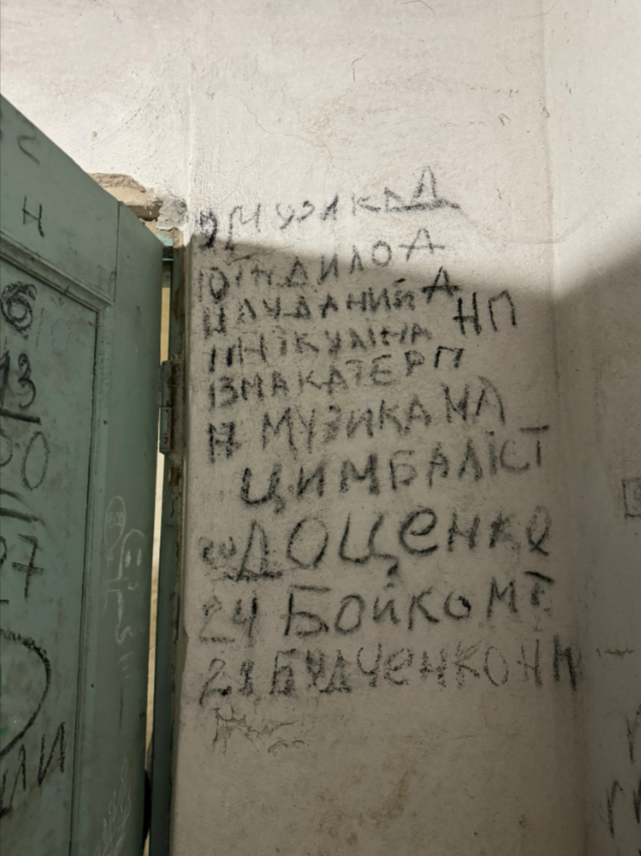
The case, prosecutors argue, is not just about holding individual perpetrators accountable but also shedding light on the broader patterns of abuse and violations of international law committed by Russian forces. From setting up military bases in protected buildings to using civilians as human shields, the allegations against the Russian soldiers paint a damning picture of their disregard for the laws of war.

For the survivors of the Yahidne siege, the trial represents a chance to seek closure and ensure that their voices are heard. Through their testimony, they hope to shine a light on the atrocities they endured and hold those responsible accountable for their actions. As Ukraine's quest for justice unfolds, the world watches with bated breath, hopeful that this landmark trial will bring a measure of solace to the victims and serve as a deterrent against future atrocities.
27.02.24

-
 1
1
-
-
- Popular Post
- Popular Post
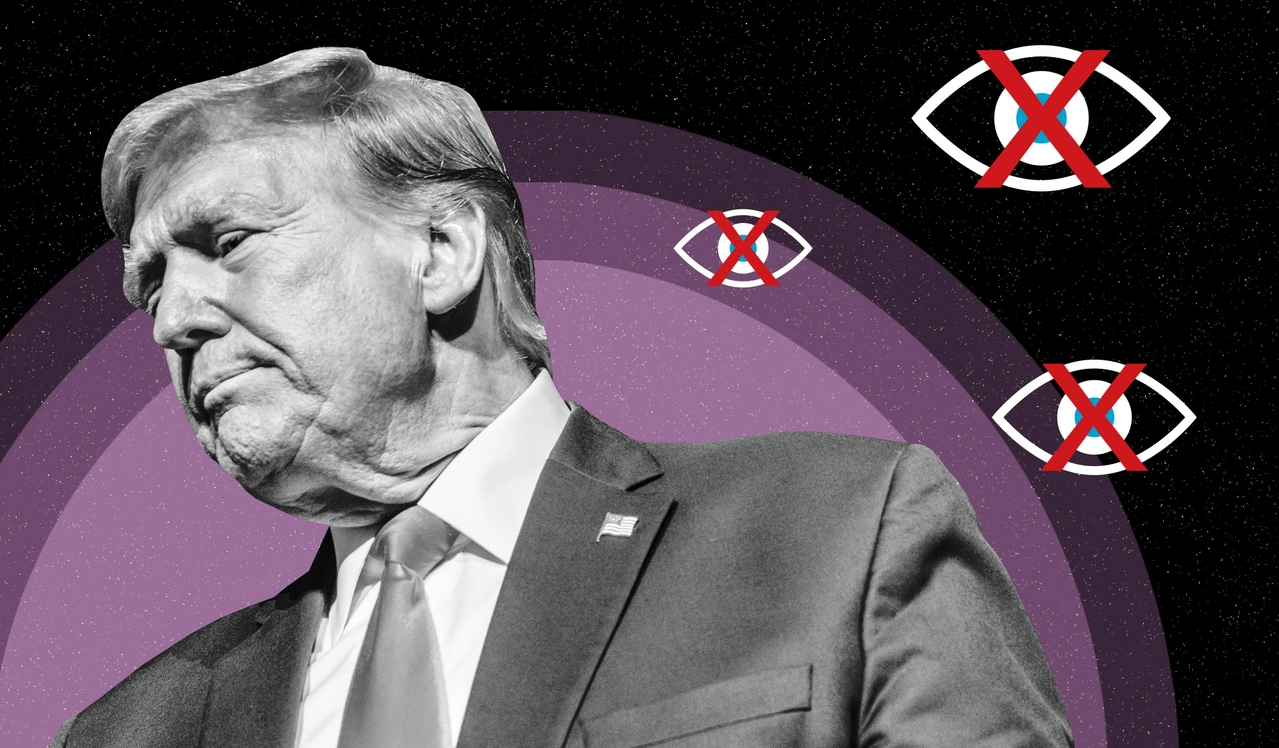
The prospect of a second Trump presidency is sending shockwaves through the intelligence community, with concerns mounting over the potential for unprecedented politicization of intelligence agencies. Former officials from Donald Trump's administration, speaking on condition of anonymity, warn that a second term for Trump could see a renewed effort to overhaul the nation's spy agencies, with far-reaching consequences for the credibility and independence of American intelligence.
During his first term, Trump made no secret of his desire to reshape intelligence agencies to better align with his political agenda. Now, with the possibility of a second term on the horizon, there are fears that Trump will double down on these efforts, purging agencies of perceived adversaries and installing loyalists who may lack the necessary experience for their roles.

The implications of such a move are profound. An intelligence community beholden to political interests rather than objective analysis could undermine the credibility of American intelligence, particularly at a time when the U.S. and its allies face complex challenges in regions like Ukraine and the Middle East. Moreover, it could compromise the ability of intelligence agencies to provide impartial assessments and dissuade the president from making decisions that put the country at risk.
Trump's contentious relationship with the intelligence community has been a hallmark of his presidency. From publicly questioning their findings to seeking to downplay their assessments, Trump has often clashed with intelligence officials, undermining their work and eroding trust in their conclusions.
If re-elected, Trump could wield even greater influence over intelligence agencies, reshaping them in his image and marginalizing dissenting voices. This could have far-reaching implications for national security, with potentially dire consequences for the safety and well-being of Americans.
Despite the risks, some former officials argue that the intelligence community is in need of reform to adapt to evolving threats. However, they caution that any changes must be carried out with careful consideration for the integrity and independence of intelligence agencies.
As the possibility of a second Trump presidency looms large, the intelligence community finds itself at a crossroads. With the stakes higher than ever, the need to safeguard the integrity of American intelligence has never been more urgent. Only time will tell whether the lessons of the past will guide future decisions, or whether the pursuit of political expediency will trump the imperative of national security.
27.02.24

-
 1
1
-
 2
2
-
- Popular Post
- Popular Post

Has enough actually been done to tackle the fact that many Islamist fundamentalists with bad intentions live and walk among us?
In the aftermath of Sir David Amess's tragic death at the hands of an Islamist extremist, the specter of religiously motivated violence has cast a long shadow over British politics. As his successor, Anna Firth, reflects on the harrowing events surrounding his murder and the broader implications for democracy, her words resonate with a sense of urgency and concern.
Firth's tenure as a Member of Parliament for Finchley and Golders Green has been marked by both personal and professional challenges, as she grapples with the ever-present threat of extremist violence. Mike Freer's decision to step down due to the relentless targeting by Islamist extremists underscores the severity of the situation, with his office being firebombed and Firth narrowly avoiding a similar fate to her predecessor.
In the face of such brazen acts of terrorism, Firth questions whether enough is being done to address the underlying threat posed by Islamist fundamentalism. She highlights the reluctance to confront this issue head-on, citing fears of being labeled as racist or Islamophobic. This hesitation, she argues, only serves to embolden extremists and undermines efforts to safeguard democracy.
Firth's concerns are compounded by recent events in the House of Commons, where the Leader of the Opposition, Sir Keir Starmer, reportedly pressured the Speaker to allow a vote on a contentious motion related to the conflict in Gaza. This apparent capitulation to external pressure raises troubling questions about the integrity of parliamentary proceedings and the influence of extremist groups on political decision-making.
The scenes outside Parliament on that fateful day serve as a stark reminder of the challenges facing lawmakers like Firth, who must navigate a fraught political landscape while ensuring their own safety and security. The emergence of a vocal and aggressive mob, fueled by a toxic blend of Islamist ideology and far-left activism, threatens to undermine the very foundations of democracy.
As Firth reflects on her experiences both inside and outside of Parliament, she recounts encounters with hostility and intimidation, including a disturbing confrontation at a local mosque and a targeted smear campaign in her constituency. These incidents, she argues, are symptomatic of a broader trend towards intolerance and extremism that must be addressed with urgency and resolve.
Despite the gravity of the situation, Firth remains steadfast in her commitment to upholding democratic principles and resisting efforts to silence dissent. She echoes calls for greater police intervention to combat extremist threats and advocates for a more proactive approach to countering radicalization and hate speech.
In the wake of Sir David Amess's tragic death, Firth's voice serves as a poignant reminder of the challenges facing lawmakers in an increasingly volatile political climate. Her courage and resilience in the face of adversity embody the spirit of democratic values, and her call to action resonates with a sense of urgency that cannot be ignored. As she continues to navigate the complex landscape of British politics, Firth remains steadfast in her commitment to defending democracy and confronting extremism head-on.
27.02.24

-
 2
2
-
 1
1
-
 2
2
-

The dynamics within the Trump family, particularly between Melania Trump and Ivanka Trump, have long been a subject of speculation and intrigue. Now, a new book by Katie Rogers sheds light on the alleged power struggle between the former first lady and the president's daughter, revealing a four-year battle for influence and recognition within the White House.
According to Rogers' forthcoming book, titled "American Woman: The Transformation of the Modern First Lady, from Hillary Clinton to Jill Biden," Melania and Ivanka engaged in an internal power struggle from the outset of Donald Trump's presidency. The conflict reportedly stemmed from Ivanka's initial attempts to assume the role of first lady in Melania's absence, as the former first lady remained in New York to allow her son Barron to finish the school year.
Ivanka's plans to overhaul the Executive Mansion's East Wing and expand her role to encompass the entire First Family's needs were met with resistance from Melania, who saw it as a direct challenge to her position. Despite President Trump's endorsement of Ivanka's involvement in first lady duties, Melania firmly rejected the idea, setting the stage for a tense standoff between the two women.
The strained relationship between Melania and Ivanka was further exacerbated by their divergent approaches to public appearances and media coverage. Melania's infamous "I really don't care, do you?" jacket, worn during a visit to detained migrant children at the southern border, was interpreted by some as a deliberate message aimed at her stepdaughter. Sources within the administration suggest that Melania was keenly aware of the media's portrayal of her and closely monitored her public image, leading to heightened tensions between the two women.
Beyond their personal differences, Melania's focus on her financial security also contributed to the rift between her and Ivanka. Meetings with legal teams to address pre- and post-nuptial agreements occupied much of Melania's time during her tenure as first lady, highlighting her determination to protect her assets and financial independence.
While Melania's office confirmed the existence of these meetings, they denied specific details regarding prenuptial agreements, emphasizing Melania's successful career and financial autonomy prior to her marriage to Donald Trump.
Despite the acrimony between Melania and Ivanka, the book suggests that Melania has maintained a cordial relationship with her successor, Jill Biden, exchanging birthday cards since leaving the White House. As speculation mounts about Melania's role in her husband's re-election campaign, her absence from the campaign trail has only fueled further intrigue about her future plans.
As the political landscape continues to evolve, Rogers' book offers a revealing glimpse into the complex dynamics of the Trump family and the inner workings of the White House during Donald Trump's presidency. With its insights into the personal and professional rivalries that shaped Melania's time as first lady, "American Woman" promises to be a compelling exploration of power, ambition, and influence in modern politics.
27.02.24

-
 1
1
-
-
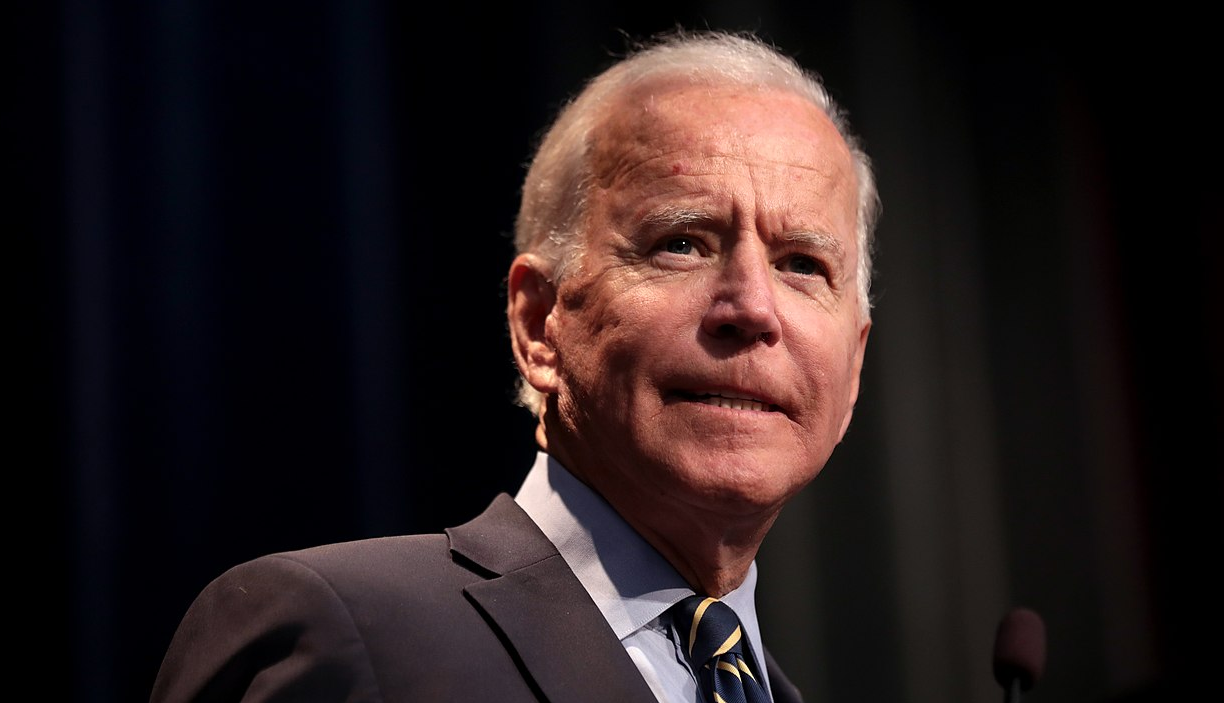
As the countdown to November's pivotal election inches closer, the Biden administration finds itself grappling with a mounting sense of frustration over its portrayal in the media. With persistent concerns swirling about President Biden's fitness for office, exacerbated by his age, his camp is pushing back against what they perceive as biased coverage that disproportionately focuses on his occasional verbal slips and questions about his capacity to lead.
This discontentment with media coverage is not a new phenomenon in American politics, but rather a recurring theme that has plagued both Democratic and Republican administrations alike. From the controversies surrounding Hillary Clinton's private email server to the relentless scrutiny of former President Trump's every move, the media's role in shaping public perception has become increasingly contentious and fraught with partisan undertones.
For Biden and his allies, the frustration lies in what they perceive as a double standard in the way the media covers him compared to his opponents. While Biden faces relentless scrutiny over his age and occasional gaffes, his likely opponent in the upcoming election, Trump, is embroiled in legal troubles and facing numerous felony charges. Yet, the media's spotlight appears to linger more on Biden's slip-ups than on Trump's legal woes, fueling accusations of bias and unfair treatment.
The release of a special counsel report earlier this month, which concluded that Biden would not face charges for his handling of classified documents, only served to exacerbate tensions between the administration and the media. While the report offered vindication for Biden, it also contained passages questioning his ability to recall key events and raised concerns about his retention of classified materials. The White House took issue with the media's focus on these aspects of the report, arguing that they misrepresented the findings and undermined Biden's credibility.
In response to what they perceive as unfair coverage, Biden's camp has taken a more confrontational approach, publicly criticizing media outlets and calling attention to what they view as sensationalist attacks on the president's age. While this may be a departure from the administration's previous strategy of downplaying media criticism, some believe that a more assertive stance is necessary to combat negative perceptions and bolster Biden's image as a strong and capable leader.
However, critics argue that Biden's occasional verbal slips and missteps are fair game for media scrutiny, especially given his age and the demands of the presidency. While Biden has sought to downplay concerns about his cognitive abilities, his occasional gaffes have raised questions about his fitness for office and whether he is up to the task of leading the nation.
In the age of social media and 24-hour news cycles, optics matter more than ever, and Biden's camp is keenly aware of the importance of shaping public perception. As the 2024 election looms on the horizon, Biden and his allies are acutely aware of the stakes involved and the need to effectively navigate the media landscape to ensure a favorable outcome.
Ultimately, the battle between the Biden administration and the media underscores the broader challenge of balancing transparency and accountability with the demands of political leadership. While every president must contend with media scrutiny, Biden's camp is making it clear that they will not hesitate to push back against what they view as unfair portrayals in their quest to shape the narrative and secure another term in office.
26.02.24

-
 1
1
-
-

Labor's Moral Obligation in Confronting Anti-Semitism Amidst Global Unrest
In the current landscape of Australia, a profound ethical dilemma has emerged, highlighting the stark disparity between political rhetoric and societal reality. Against the backdrop of Nationals senator Perin Davey's inconsequential indiscretion of sipping wine in Parliament House, a tidal wave of anti-Semitic sentiment has been steadily rising, engulfing Jewish communities across the nation. This disconcerting dichotomy underscores a broader issue plaguing the nation's moral compass, where discussions of integrity and ethics appear to be disconnected from the palpable racism and prejudice prevalent in daily life.
Foremost among the political actors grappling with this moral crisis is the Labor Party, renowned for its purported commitment to moral rectitude. However, recent events have exposed a troubling blind spot within the party, particularly concerning the escalating global wave of anti-Semitism and its infiltration into Australian society. Despite Leader Anthony Albanese's reactive responses to instances of anti-Semitism, it appears that the party's approach is more focused on managing the electoral fallout rather than addressing the underlying social malaise with proactive and moral leadership.
Albanese's hollow pledge last November to prevent anti-Semitism from taking hold in Australia rings hollow in the face of the pervasive anti-Semitic infiltration that has already taken root. Labor's reluctance to acknowledge the gravity of the situation and its failure to confront the issue head-on reflects a dangerous complacency that only serves to perpetuate the problem. In contrast to its proactive stance against the threat posed by figures like Pauline Hanson in the 1990s, the party's response to the current, more insidious brand of anti-Semitism appears tepid and ineffectual.
The significance of October 7 cannot be overstated, as it marked a pivotal moment both for Israel and for Western democracies, unleashing a virulent strain of anti-Semitism with deep-seated roots. The subsequent surge in anti-Israel sentiment across various sectors of Australian society, including academia, unions, and the media, underscores a broader ideological shift within the progressive left, where hostility towards Israel has become a prevailing orthodoxy. This convergence of anti-Zionism with anti-Semitism represents a dangerous fusion that threatens to further exacerbate tensions and deepen societal divisions.
Labor's failure to grasp the gravity of the situation and its reluctance to confront the ideological underpinnings of anti-Semitism only serve to embolden its proponents. While Albanese has intermittently condemned anti-Semitism, the party's overall response has been lackluster, reflecting a misguided belief that low-key statements will suffice to address the issue. Such passive indifference only serves to compound the problem, leaving the Jewish community in Australia vulnerable and exposed during a time of unprecedented crisis.
In the face of mounting anti-Semitic rhetoric and actions, the Labor Party must recognize its moral obligation to take decisive action. This entails more than just issuing condemnatory statements; it requires a concerted effort to combat the root causes of anti-Semitism and promote a culture of tolerance and inclusivity. Failure to do so not only undermines the party's moral credibility but also perpetuates the cycle of bigotry and hatred that threatens to tear at the fabric of Australian society.
As the nation grapples with the resurgence of anti-Semitism, Labor must rise to the occasion and demonstrate moral leadership in confronting this pervasive threat. The time for passive indifference is over; now is the time for decisive action and unwavering commitment to combating hatred and prejudice in all its forms. Anything less would be a betrayal of the values and principles upon which the party claims to stand.
26.02.24
Anti-Semitism becoming ‘trendy’ among the left in Australia

-
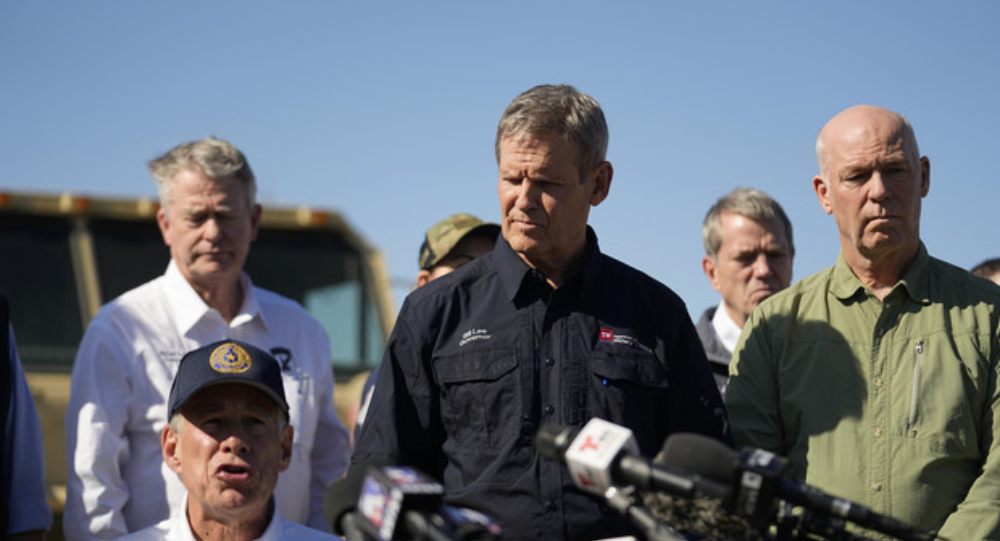
Republican governors have firmly rejected President Biden's plea for support in reviving the collapsed bipartisan border deal, emphasizing their dissatisfaction with the administration's approach to immigration.
At a recent meeting with a bipartisan group of governors, Biden discussed his exploration of executive actions to address the surge in border crossings but expressed frustration with potential legal obstacles. He urged governors to lobby their congressional representatives to resurrect the failed border bill, which fell apart amid opposition from former President Trump and congressional Republicans.
However, Republican governors have pushed back against Biden's appeal. North Dakota Governor Doug Burgum remarked that while the sales pitch was made, he doubted that any minds were changed among the governors. Montana Governor Greg Gianforte, who previously criticized Biden's handling of immigration, expressed disappointment with the meeting at the White House and reiterated his belief that the border could be controlled through executive action.
Oklahoma Governor Kevin Stitt echoed these sentiments, calling on Biden to reinstate the "remain in Mexico policy" and dismissing Biden's explanations as mere excuses. Utah Governor Spencer Cox, a Republican, noted that Biden did not specify the executive actions he was considering and suggested that the president was frustrated by the legal constraints he faced.
Despite the partisan divide, Democratic governors supported Biden's efforts to address the border crisis. Colorado Governor Jared Polis emphasized the importance of securing the border and controlling immigration flow, while Democratic North Carolina Governor Roy Cooper expressed hope that bipartisan support for the legislation could still be achieved.
Overall, the rejection of Biden's plea by Republican governors underscores the ongoing political deadlock on immigration issues, with both parties offering contrasting perspectives on how to address the situation at the southern border.
26.02.24

-
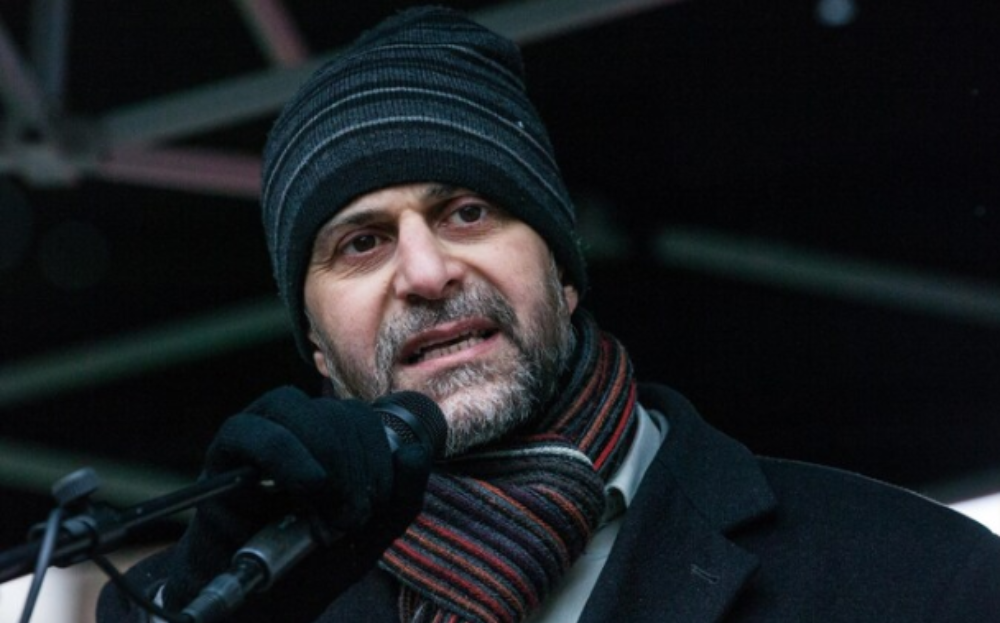
The Metropolitan Police in London has severed ties with Mohammed Kozbar, a prominent mosque chairman, after a social media post from late January raised concerns about his views. Kozbar, who was previously praised as an advisor, faced scrutiny after his past praise for the founder of Hamas, a designated terrorist organization, resurfaced.
The decision to end engagement with Kozbar comes after a series of revelations regarding his online activity. In addition to his previous endorsement of Hamas's founder, Kozbar recently "liked" a post by Dr. Wahid Shaida, a former leader of Hizb ut-Tahrir, another extremist group. This raised further questions about Kozbar's suitability as an advisor to law enforcement agencies.
The Metropolitan Police emphasized the importance of working with faith and community advisor groups to address crime and social issues. However, they stressed the need for these groups to uphold principles of mutual respect and inclusivity. Kozbar's recent social media activity, including sharing a video disseminating conspiracy theories about Israeli influence, was deemed incompatible with this ethos.
Kozbar has defended himself against accusations of extremism, stating that his comments about the founder of Hamas were made before the organization was proscribed. He has also emphasized his condemnation of violence against civilians and his support for the Palestinian cause.
This development reflects a broader trend of scrutiny over individuals associated with extremist views within community leadership roles. The Metropolitan Police's decision to cut ties with Kozbar underscores the importance of ensuring that advisors uphold values of inclusivity and respect while collaborating with law enforcement agencies.
26.02.24

-

Black leaders and the Democratic National Committee (DNC) have strongly condemned former President Trump for what they describe as "racist" comments made at the Black Conservative Federation (BCF) annual gala in South Carolina.
During his speech, Trump suggested that his legal troubles had garnered him support from Black voters across the country, claiming that they viewed him as a victim of discrimination. He also mentioned that Black Americans had "embraced" his mugshot and asserted that he knows Black people because they built his buildings.
These remarks sparked outrage among Black leaders, with Derrick Johnson, president of the NAACP, denouncing Trump's statement as delusional and racist. Mondale Robinson, founder of the Black Male Voter Project, echoed this sentiment, stating that Trump's comments would not resonate well with Black men and describing them as "absolutely racist."
Trump, who is facing numerous criminal charges and civil lawsuits, has been attempting to court Black voter support ahead of the upcoming general election. However, his efforts have been met with skepticism and criticism from some Black voters, who view his overtures as insincere and opportunistic.
The DNC also condemned Trump's remarks, dismissing them as "tired tropes" and emphasizing that they would not win over Black voters who have experienced economic hardships under Trump's leadership. Sarafina Chitika, the DNC's national press secretary, characterized Trump's ideas as "corny and racist."
In addition to criticizing Trump's comments, the DNC highlighted the accomplishments of President Biden and Vice President Harris in addressing issues important to Black voters, such as record low Black unemployment and investments in Historically Black Colleges and Universities (HBCUs).
Trump's speech also included accusations against Biden, whom he labeled as a "nasty and vicious racist." In response, the Biden-Harris campaign issued a scathing rebuke, calling Trump "an incompetent, anti-Black tyrant" and highlighting his history of racially insensitive remarks and policies.
Jasmine Harris, Black Media Director for the Biden-Harris re-election campaign, emphasized that Black Americans are aware of Trump's track record and will not be swayed by his attempts to appeal to them. She concluded by asserting that Black voters will reject Trump in the upcoming election.
26.02.24

-
 1
1
-
-
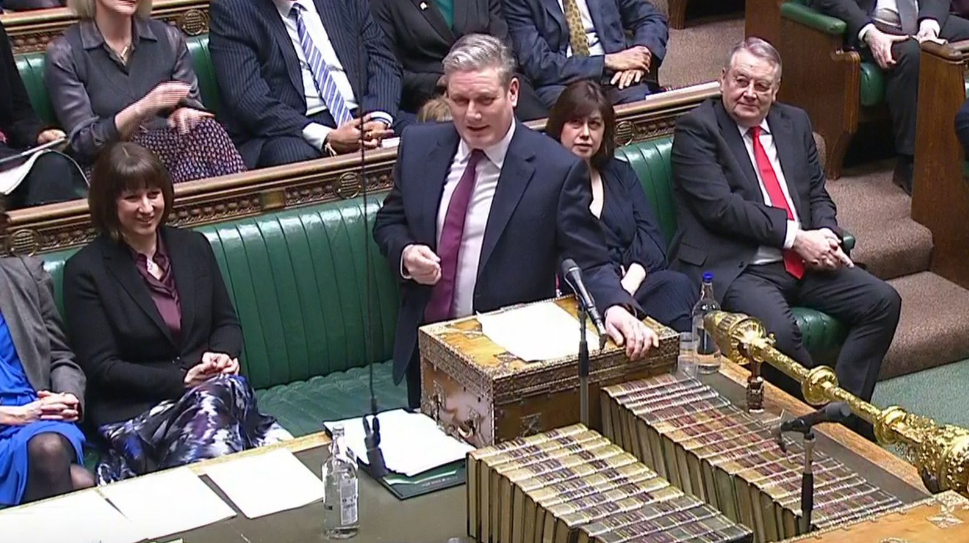
Labour leader Sir Keir Starmer has accused Prime Minister Rishi Sunak of harboring extremists within the Conservative Party, following the suspension of Tory MP Lee Anderson over Islamophobic remarks. Starmer criticized Sunak's leadership, labeling it as weak and suggesting that it enabled Anderson to act without consequence.
The suspension of Anderson came after he made derogatory comments about London Mayor Sadiq Khan, prompting swift action from the Conservative Party. However, Starmer questioned Sunak's judgment in appointing Anderson as deputy chairman of the party, highlighting a pattern of what he deemed as extremist behavior within Tory ranks.
In a statement, Starmer emphasized the need for Sunak to confront and address the presence of individuals with extremist views within his party. He pointed to instances where other Conservative MPs had remained silent on issues of extremism or had made inflammatory statements, suggesting that Sunak's leniency allowed such behavior to persist unchecked.
Sunak, in response, released a statement condemning threats and intimidation against MPs amid heightened tensions surrounding the Israel-Hamas conflict. However, his statement notably omitted any direct reference to Anderson or his remarks. This omission raised eyebrows and led some to question Sunak's commitment to addressing Islamophobia within the party.
The incident underscores the challenges facing Sunak as he attempts to maintain unity within the Conservative Party while also addressing concerns about extremism and intolerance. With divisions within the party becoming increasingly apparent, Sunak faces pressure to take decisive action to address these issues and uphold the values of inclusivity and respect within British politics.
26.02.24

-
 1
1
-
 1
1
-
-

In a resounding victory, Donald Trump emerged triumphant over Nikki Haley in the South Carolina Republican primary, dealing a significant blow to Haley's presidential aspirations and bolstering Trump's path to the nomination.
The Associated Press swiftly declared Trump the winner as polls closed, signaling his substantial victory in Haley's home state. This outcome underscores Trump's widespread support among South Carolina Republicans and highlights the challenge Haley faces in securing the nomination.
Addressing jubilant supporters in Columbia, Trump celebrated the unity within the Republican Party and expressed his gratitude for the overwhelming support. Having secured victories in key early voting states like Iowa, New Hampshire, and Nevada, Trump's dominance in South Carolina further solidifies his frontrunner status.
For Haley, a former South Carolina governor and Trump's ambassador to the United Nations, the defeat represents a setback in her bid for the presidency. Despite her determination to continue the race, Haley faces mounting obstacles, including consecutive losses and skepticism about her ability to defeat Joe Biden in the general election.
Undeterred by her recent defeats, Haley reaffirmed her commitment to the campaign, citing frustration with the country's direction and her determination to address it. She announced plans for a significant national advertising campaign and a rigorous schedule of rallies and events across key primary states.
However, Trump and his allies remain skeptical of Haley's chances, labeling her campaign as a "Never Trump operation" and questioning her reliance on wealthy donors to sustain her bid. Despite these challenges, some view Haley's candidacy as a potential glimpse into the future of the Republican Party and speculate about her prospects in future elections.
As Trump shifts his focus to the general election contest against Biden, his campaign confronts legal challenges and mounting financial pressures. Nonetheless, Trump's enduring support among Republicans remains steadfast, bolstered by his aggressive campaign strategy and continued dominance within the party.
With Trump's victory in South Carolina, the path to the Republican nomination becomes clearer, while Haley's presidential aspirations face a daunting road ahead. As the primary season progresses, the dynamics of the race are likely to evolve, shaping the future of the Republican Party and the broader political landscape.
25.02.24
-
 2
2
-
 1
1
-
-

The second anniversary of Russia's invasion of Ukraine marks a sobering realization for Western powers: the initial optimism of repelling Moscow's advances has given way to a strategic impasse. Despite possessing the capability to support Ukraine with weapons, technology, and intelligence, the United States is perceived in Europe to have wavered in its resolve. Conversely, while European nations demonstrate the will to assist Ukraine, they lack the military capacity to effectively counter Russia's aggression.
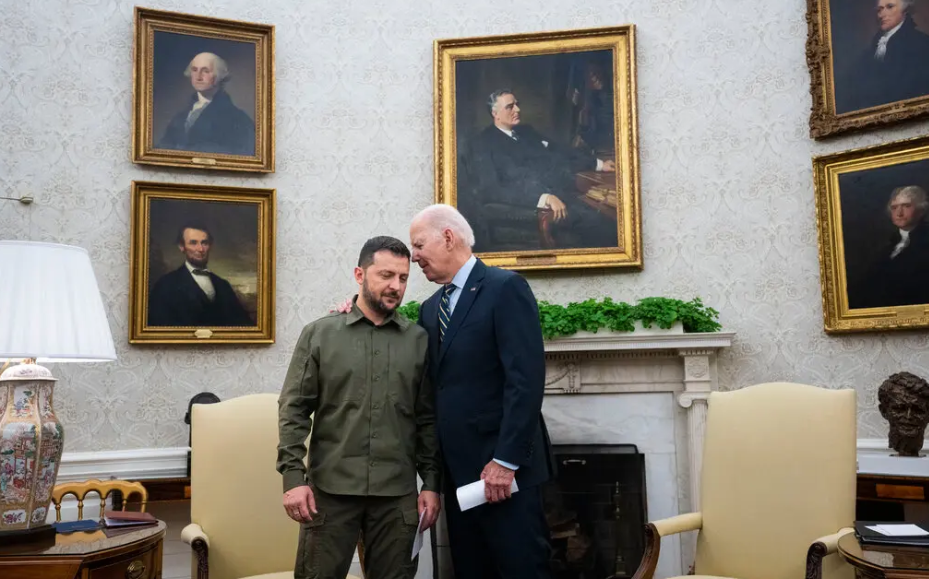
This predicament underscores the complexities facing Ukraine and its NATO allies. Previously, there was optimism that European and American support, including military aid and intelligence sharing, could push back Russian forces. However, harsh lessons have emerged over the past year. Sanctions intended to cripple Russia's economy have faltered, and Moscow's military expenditure has surged, buoyed by income from oil exports.
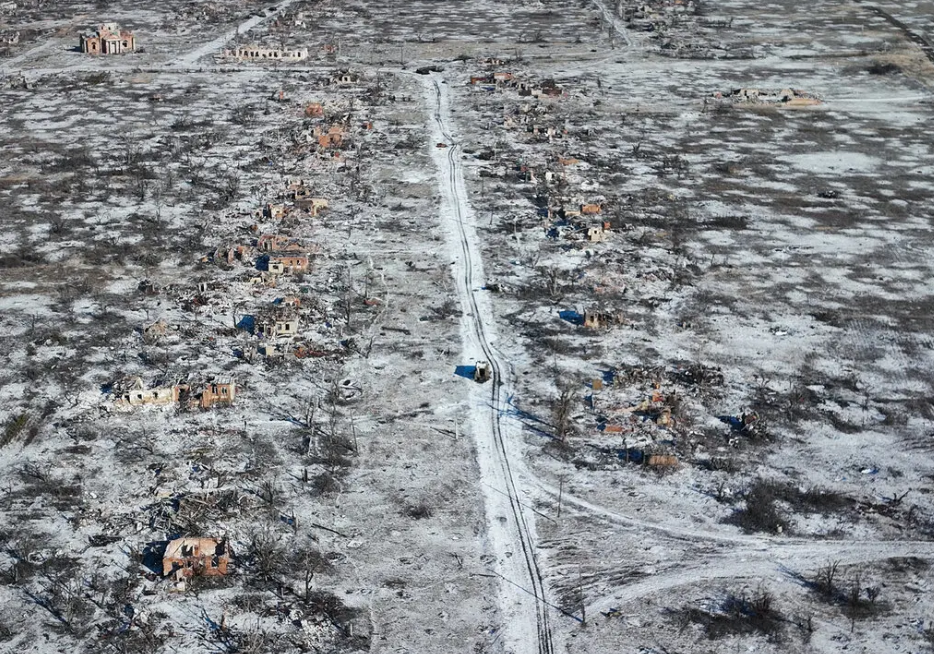
As hopes for a negotiated settlement dwindle, President Vladimir Putin appears determined to prolong the conflict, betting on domestic political shifts in the United States and potential vulnerabilities in Ukraine's defense funding. Despite NATO's expansion and increased defense spending among member states, concerns persist about the alliance's ability to deter future Russian aggression.

At the heart of the stalemate lies the absence of viable negotiation prospects. While earlier discussions explored the possibility of a negotiated settlement, current debates in the U.S. Congress and waning optimism about Ukraine's ability to withstand prolonged conflict have shifted priorities. Some voices advocate for a more pragmatic approach, emphasizing the need for Ukraine to secure its long-term economic viability and democratic future, even if it means conceding territory.
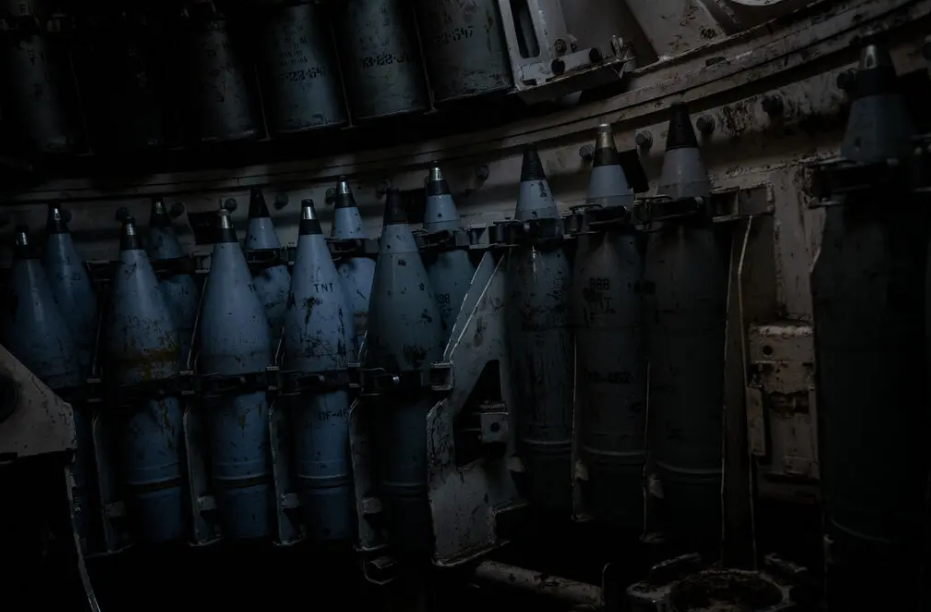
Amidst these deliberations, European public opinion is shifting, reflecting growing concerns about Ukraine's ability to resist Russian advances. Despite significant financial pledges, European efforts to bolster Ukraine's defense capabilities face logistical challenges and disagreements over arms procurement and funding distribution.
The evolving geopolitical landscape demands a reassessment of strategies aimed at deterring Russian aggression. Admitting past shortcomings and charting a new course forward may offer a more effective approach than empty self-congratulation. Ultimately, the fate of Ukraine and the stability of the region hinge on the collective resolve of Western powers to confront the challenges posed by Russia's belligerence.
25.02.24

-
- Popular Post

In a contentious decision, the town of Westlock, Alberta, has voted to ban Pride flags and rainbow crosswalks on municipal property. The plebiscite resulted in a slim majority of 663 votes in favor of flying only government flags and painting crosswalks in a white striped pattern, with 639 opposed.
Mayor Jon Kramer expressed disappointment but emphasized the town's commitment to embracing marginalized groups, including the LGBTQ community. Despite the setback, Kramer pledged to continue finding ways to support diversity and inclusion.
Last year, Westlock's first Pride crosswalk was painted by a local gay-straight alliance, but the decision faced pushback, leading to the recent plebiscite. The vote's outcome cannot be reversed by the council without another plebiscite.
The Westlock Neutrality Team, which initiated the petition for public neutrality, did not immediately respond to requests for comment. However, Kristopher Wells, an expert in LGBTQ issues, voiced concern for the youth who contributed to the crosswalk, stressing that removing symbols of LGBTQ support does not erase LGBTQ people from the community.
Wells highlighted a broader trend of anti-LGBTQ sentiment in Canada, citing recent policies affecting transgender individuals in Alberta, Saskatchewan, and New Brunswick. Alberta's plan to introduce parental consent requirements for name and pronoun changes at school and restrictions on gender affirmation treatments has sparked controversy.
Janis Irwin, Alberta Opposition NDP critic for LGBTQ issues, expressed solidarity with those affected by the vote, emphasizing the ongoing fight for inclusivity in the province.
Despite the ban on Pride symbols, Mayor Kramer remains committed to fostering inclusion in Westlock. He cited initiatives such as wheelchair ramps, an accessible playground, and a Filipino story time at the library as examples of the town's efforts to embrace diversity.
Kramer stressed that while flags and crosswalks may be restricted, the pursuit of inclusion remains a creative endeavor, and the town will continue exploring alternative avenues to support all members of the community.
25.02.24

-
 1
1
-
 1
1
-
 1
1
-

A left-wing anarchist from Liverpool, Jacob Graham, has been convicted of terrorism offenses after creating and sharing a bomb-making manual, expressing a desire to kill at least 50 people, and engaging in extremist rhetoric.
Graham, 20, authored a manual named the "Freedom Encyclopaedia," dedicated to "terrorists past and future, anarchists etc," and concealed bomb-making chemicals in a secluded woodland area. His "My Plan" document outlined intentions to target government buildings and politicians' residences to cause significant harm.

Additionally, Graham produced 138 videos demonstrating explosives and discussed themes like "Judgement Day" and "standing up for working-class people." Disturbingly, his bedroom wall featured a picture of a car bomb with a menacing message aimed at politicians.
While Graham was acquitted of planning a terrorist attack, he was found guilty of preparing acts of terrorism by crafting the Freedom Encyclopaedia, disseminating terrorist publications, and possessing documents conducive to terrorism.

The evidence against Graham revealed his procurement of chemicals, experimentation with explosives, and plans to manufacture a 3D-printed assault rifle. His admiration for the Unabomber, Theodore Kaczynski, and aspirations to continue his violent legacy further underscored his dangerous mindset.

Graham's ideology stemmed from anti-government sentiments and ecological concerns. He identified as "left-wing" and "more like an anarchist," citing dissatisfaction with centralized control and advocating for environmentalism and social justice.

During his trial, Graham articulated grievances against government policies, pandemic management, and socio-economic inequalities. His radicalized views, expressed through video diaries, threatened violence against institutions and individuals, including his college.
The case highlights the dangers of extremist ideologies and the potential for radicalization among young individuals. Graham's conviction serves as a stark reminder of the importance of countering extremist narratives and safeguarding communities against terrorism.
25.02.24

-
- Popular Post
- Popular Post
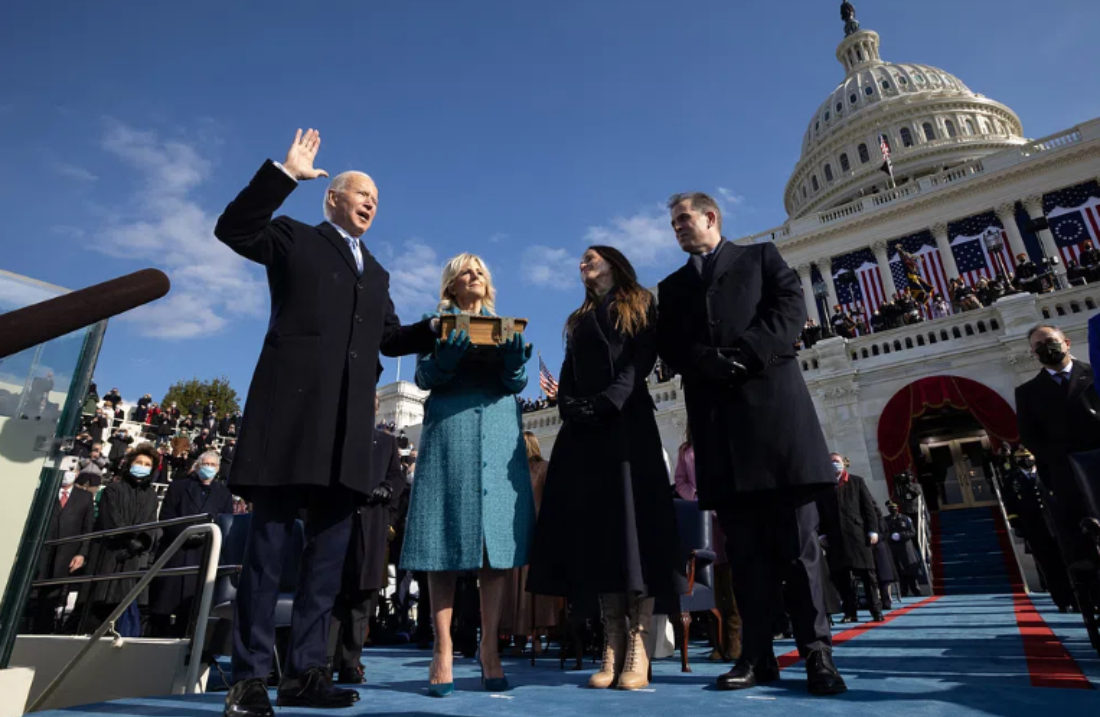
In a recent development, the Justice Department has implicated a former FBI informant, Alexander Smirnov, in disseminating misinformation with potential Russian involvement to undermine President Joe Biden. This revelation has reignited debates over the extent of Russian influence in promoting unverified allegations regarding Joe and Hunter Biden's dealings in Ukraine.
The Justice Department's accusation against Smirnov alleges that he fabricated a story about Joe Biden and Hunter Biden receiving $5 million bribes, which was later debunked by the department during the Trump administration. Despite this, Smirnov continued to spread falsehoods after reportedly interacting with Russian intelligence operatives.
This latest episode echoes concerns raised during the 2020 election when unsubstantiated claims regarding Hunter Biden's laptop surfaced in a New York Post article. At the time, 51 former intelligence officials warned of potential Russian involvement in disseminating such information, although no direct evidence linking Russia to the laptop materials has been publicly disclosed.
The former officials, including CIA veterans like Marc Polymeropoulos and John Sipher, felt vindicated by the recent allegations against Smirnov, asserting that their warnings about Russian interference were prudent. However, critics, particularly from the GOP-led House Judiciary Committee, maintain that the laptop contents were genuine and accuse the signatories of the letter of spreading false information.
While the letter indeed served to deflect accusations of Biden family corruption during the election, suspicions of Russian involvement persisted, especially given Rudy Giuliani's interactions with individuals tied to Russian intelligence. Giuliani, a close associate of former President Donald Trump, provided the laptop materials to the New York Post.
The emergence of the laptop materials coincided with intelligence reports indicating Giuliani's exchanges with Russian agents, further fueling concerns about foreign interference. These suspicions were compounded by Smirnov's alleged contacts with Russian operatives and his dissemination of misinformation targeting a major presidential candidate.
The ongoing scrutiny surrounding Smirnov's actions underscores the broader issue of foreign interference in American democracy. As the Justice Department seeks to address the impact of false narratives on electoral processes, questions remain about the motives behind Smirnov's actions and the extent of Russian involvement in promoting divisive narratives.
25.02.24

-
 1
1
-
 2
2
-
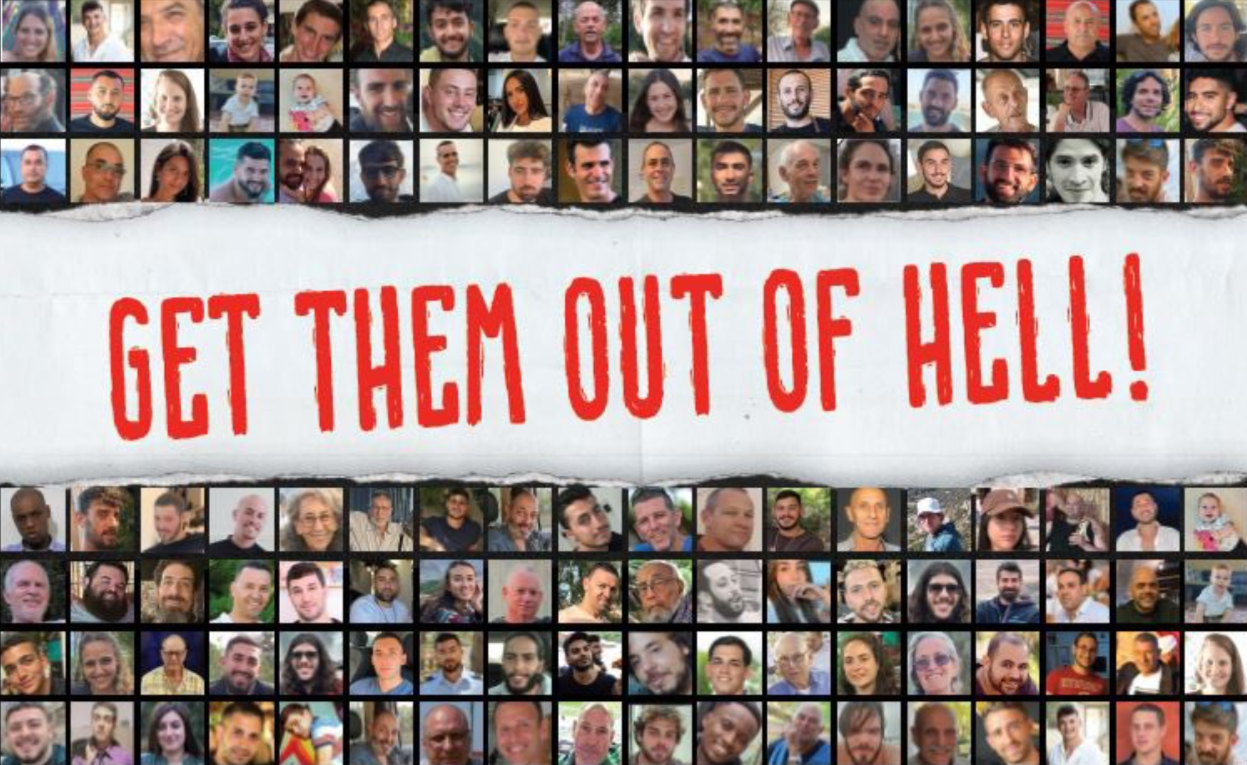
Negotiations aimed at securing the release of hostages held by Hamas in Gaza have taken a significant step forward following a pivotal meeting in Paris. Sources familiar with the discussions revealed that U.S., Qatari, and Egyptian officials presented a refined proposal to Israeli negotiators during the gathering, marking a potentially crucial development in the ongoing efforts to broker a deal.
The new framework offers a more detailed outline, suggesting that Hamas would release approximately 40 hostages in exchange for a six-week ceasefire and the release of hundreds of Palestinian prisoners held by Israel. This proposal builds upon previous initiatives but provides a clearer roadmap for moving forward, enhancing the prospects of reaching a mutually acceptable agreement.
Key figures involved in the talks included CIA director Bill Burns, Qatari Prime Minister Sheikh Mohammed bin Abdulrahman al-Thani, and Abbas Kamel, the director of Egyptian intelligence. Their participation underscores the significance and urgency of finding a resolution to the hostage situation.
Following the meeting, the Israeli delegation, comprising officials from Mossad, Shin Bet, and the Israel Defense Forces intelligence, returned to Israel to brief the war cabinet. The outcome of this briefing, expected to take place over the weekend, will determine the next steps in the negotiation process.
While progress has been made, the success of the proposed framework hinges on several factors. Firstly, it requires approval from the Israeli war cabinet. Additionally, Qatari and Egyptian negotiators must secure Hamas' agreement to the new terms, ensuring that all parties are committed to advancing the negotiations in good faith.
The timing of these discussions is critical, with the Biden administration expressing a desire to reach a deal before the start of Ramadan, which is just over two weeks away. As such, follow-up meetings are anticipated in the coming days, with the hope of building on the momentum generated by the Paris talks.
Ultimately, the renewed focus on diplomatic efforts to secure the release of hostages reflects a collective commitment to resolving conflicts through dialogue and negotiation. While challenges remain, the willingness of all stakeholders to engage in constructive dialogue offers hope for a peaceful resolution to this longstanding humanitarian issue.
25.02.24

-

The Oklahoma LGBTQ+ community has faced disparaging remarks from State Senator Tom Woods, who reportedly referred to them as "filth" during a legislative forum sponsored by the Tahlequah Area Chamber of Commerce.
In response to a question from an audience member about legislative focus on LGBTQ+ citizens, particularly in light of recent events involving a bullied LGBTQ+ student, Woods expressed disdain. The student, Nex Benedict, tragically passed away after an altercation at Owasso High School, sparking conversations about the need for better protection for LGBTQ+ students.
Despite the sensitivity of the situation, Woods made derogatory remarks, stating, "I represent a constituency that doesn't want that filth in Oklahoma." He justified his stance by citing Oklahoma's conservative values and religious beliefs, claiming the state is a "Christian" and "moral" state.

The senator's comments have drawn criticism, especially in the context of ongoing efforts to combat bullying and discrimination against LGBTQ+ individuals. The incident underscores the challenges faced by LGBTQ+ communities in conservative states like Oklahoma, where they continue to encounter hostility and prejudice.
Woods, who represents Senate District 4 covering several counties along the eastern border of Oklahoma, including Adair, Cherokee, Delaware, and Sequoyah, did not respond to requests for comment on the news report. His remarks have sparked outrage among LGBTQ+ advocates and raised concerns about the treatment of marginalized communities in the state.
25.02.24

-
 1
1
-
-
- Popular Post
- Popular Post

Germany's parliament has made a historic decision, legalizing the possession and cultivation of limited amounts of cannabis for personal use. The law, passed by Chancellor Olaf Scholz's ruling coalition, allows individuals and voluntary associations to grow up to three cannabis plants and possess up to 50g of cannabis at home and 25g in public.
The move comes after a contentious debate surrounding the benefits and risks of easier access to cannabis. Health Minister Karl Lauterbach emphasized the goals of cracking down on the black market and protecting children and young people. However, opposition voices, such as Christian Democrat politician Tino Sorge, criticized the measure, expressing concerns about promoting drug use.
Lauterbach countered these arguments by pointing out the increasing cannabis use among young people and the potential dangers of unregulated street drugs. With an estimated 7 million regular cannabis users in Germany, the government sees the legalization as a way to ensure safer access to the drug, particularly for medicinal purposes.
However, some doctors and opposition parties have raised concerns about the potential health risks, particularly for young people, citing increased accessibility and the risk of addiction. Despite opposition, the coalition government moved forward with the legalization, which will come into effect on April 1 for personal cultivation and possession, and later for licensed not-for-profit clubs.
While adults will be permitted to grow and possess cannabis, consumption among those under 18 will remain forbidden. Implementation of the law will fall to Germany's 16 states, with some expressing reservations and logistical challenges. However, Lauterbach has emphasized measures to restrict cannabis use near educational institutions.
Germany's decision makes it the third EU member state to legalize cannabis for personal use, following Malta and Luxembourg. Advocates hope that Germany's example will encourage other countries to reconsider their approach to cannabis legalization.
As the law goes into effect, observers worldwide will monitor its implementation and its impact on Germany's society and public health landscape.
24.02.24

-
 4
4
-
 3
3






Trump says he ‘wouldn’t protect’ Prince Harry if he’s reelected
in World News
Posted
Trump Criticizes Prince Harry, Suggests Lack of Protection if Reelected
Former President Donald Trump has stirred controversy with remarks suggesting that he would not offer protection to Prince Harry if he were to win the White House in the upcoming November elections. Trump's comments, made in an interview with the U.K.'s Daily Express, centered around what he perceived as Harry's betrayal of the queen, labeling it as "unforgivable."
The backdrop for Trump's statement is the ongoing legal battle initiated by the conservative think tank, the Heritage Foundation, against the Department of Homeland Security regarding the visa granted to the 39-year-old British royal. Trump accused the Biden administration of shielding Harry, asserting that under his presidency, Harry would not receive such protection.
Expressing his stance bluntly, Trump emphasized, "I wouldn't protect him," and added, "He would be on his own if it was down to me." These remarks highlight the contentious relationship between the former president and the Duke of Sussex, who, along with his wife Meghan, the Duchess of Sussex, relinquished their roles as full-time working members of the British royal family in 2020 and relocated to California.
The tension between Trump and Harry has been exacerbated by Harry's candid revelations in his memoir, "Spare," released last year. In the book, Harry delves into his struggles with grief following the tragic death of his mother, Princess Diana, in 1997, as well as his fraught relationship with the British press and his family.
Trump's criticism extends to the royal family, whom he accuses of being overly accommodating to Harry despite his actions. With Queen Elizabeth II's passing in 2022, Trump contends that the royal family has shown excessive leniency towards Harry, given the circumstances.
In response to Trump's comments, Harry revealed in a recent interview with ABC News that he has contemplated obtaining American citizenship. However, he clarified that it is not currently a priority for him.
The exchange underscores the ongoing tensions within the British royal family and the broader implications of Harry and Meghan's decision to step back from their official duties. As the political landscape continues to evolve, the dynamics between the royals and global figures like Trump remain a subject of scrutiny and debate.
28.02.24
Source